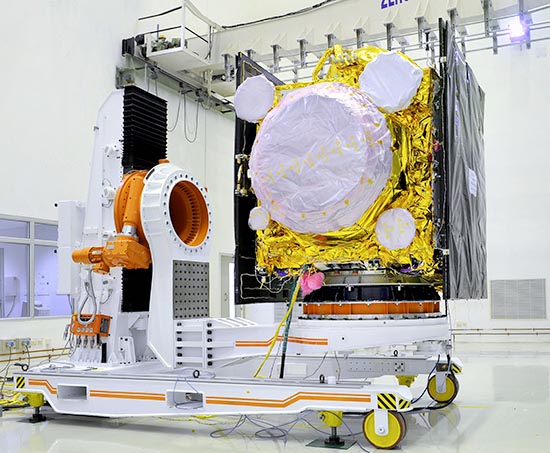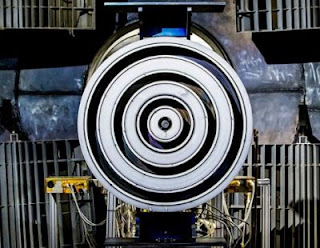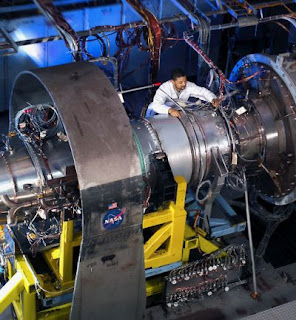House Panel for 50% Hike in ISRO’s Budget
The Parliamentary Standing Committee on Science and Technology, Environment and Forests plans to recommend to the Centre a 50 per cent raise in the Indian Space Research Organisation’s (ISRO) annual budget.
Ashwani Kumar, Chairman of the committee, addressing reporters said ISRO’s current budget is ₹5,800 crore and non-Plan allocation is ₹1,400 crore. Justifying the hike, Ashwani Kumar said
it will help ISRO enhance its manpower, especially high-tech scientific manpower which help in launching more satellites. “An organisation like ISRO should not be starved of funds,” he added. “We have been informed about the need for enhancing manpower, particularly the scientific manpower of ISRO, the lack of which was disabling the organisation to optimise its potential.”
Geosynchronous Satellite Launch Vehicle MK III at the Launch Pad

AS Kiran Kumar, ISRO Chairman said the process of hiring more scientists was being initiated. This depends on the Centre’s approval. “We need manpower for producing various satellites and also bolster our R&D set up to develop new generation satellite and launch vehicles,” he said.
Ashwani Kumar said, “The country needs to give a lot more attention to R&D and develop more satellites and launch them. There is no dearth of funds for supporting scientific establishments like ISRO which has made the country proud by putting it on the global map and among the exclusive club of nations through its huge achievements in space technology.”
He further said the sixth and seventh satellites of the Indian Navigational Satellite System would be launched by March end and that completes the constellation of seven satellites.
Source>>
Why ISRO Deserves the Budget Hike it’s Been Recommended
BY
NARAYAN PRASAD ON
18/02/2016 •
LEAVE A COMMENT
The government aims to use space technologies for a variety of public services. To realise this, ISRO needs enough funds to meet the demand for space vehicles and launches, and invest in technological research.
GSAT-6 seen with two halves of the payload faring of GSLV-D6. Credit: ISRO
When the
Parliamentary Standing Committee on Science and Technology, Environment and Forests last visited the Indian Space Research Organisation’s (ISRO) and reviewed current work there, it
recommended a 50% increase in its annual budget. It took note of ‘
the need for enhancing manpower, particularly the scientific manpower of ISRO, the lack of which was disabling the organisation to optimise its potential’.
The chairman of ISRO has also stressed “the need for manpower for producing various satellites and also bolster the R&D set up to develop new generation satellite and launch vehicles”.
There are both internal and external demand requirements acting as impetuses to this need for an increased budget. The internal demand is driven primarily by the expansion of downstream services, translating into the expansion of satellite systems and launch vehicles. The external demand is mainly driven by the success of the Polar Satellite Launch Vehicle (PSLV) and the demands to launch on it.
Demands for space technology in governance and development
The government’s drive to expand the use of space technology in governance –
by using it for agriculture, infrastructure planning, water resources, technology diffusion and other public services – may be one of the major contributors to the need for more resources in the space programme. The current government
organised a National Meet on Promoting Space Technology-based Tools and Applications in Governance and Development in September 2015 to work toward creating synergies for utilisation of space technology at the grassroots level.
With over 1,500 officials attending this meeting, 170 projects were identified where space technology could be used. This meeting may well have opened doors to many governmental departments to potentially use space-based services for effective governance.
Some of the recent announcements,
such as ISRO and the Archaeological Survey of India (ASI) coming together to helpconserve architecture of national importance, and the railways reaching an agreement with ISRO to use geo-spatial technology to set up warning systems for unmanned level-crossings, are testament to this potential being used. This expansion of downstream applications is laudable and needs to rise exponentially if harnessing space technology is to be used toward realising a better life for the
aam aadmi.
With the international success of missions such as
Chandrayaan, the Mars Orbiter Mission (MoM) and
ASTROSAT, space science has found a rising interest within ISRO. The organisation is now working on innovative missions for interplanetary exploration such as
Aditya,
MoM-2,
Chandrayaan-2 and a possible
mission to Venus.
What does this mean for ISRO?
ISRO has three major satellite systems to support space-based imagery services (e.g., Indian Remote Sensing), communications (Indian National Satellite System) and navigation systems (
IRNSS). The rise in demand for space-based services directly implies an expansion of on-orbit infrastructure will also be needed. And we see this demand implying ISRO’s
need to launch one satellite per month in the foreseeable future.
On the international front, ISRO’s commercial arm
Antrix Corporation has orders for over two dozen satellites to be launched on the Polar Satellite Launch Vehicle (PSLV). There is need to enhance launch capacity
from the traditional three to five launches per year to 12-18, and with the Geostationary SLV as well, particularly to capture the international demand.
This can only be possible via privatisation. And ISRO has announced plans to largely privatise PSLV operationsby 2020. The need for more satellites and launches needs to be supported by expansion of ground infrastructure in Bengaluru, where the satellites undergo assembly, integration and testing, and in Sriharikota, where the same happens for the launch vehicles.
Need for increased R&D efforts
While there is immense demand for space services in the country, it is important to not forget the need for increased research and development in the sector. If the focus for the next three to five years shall be based only on realising volumes in launches and spacecraft, the country might lose crucial time in the fast-changing international technology terrain. The need for innovating new technologies, which can further reduce the cost of services from space, isn’t important only from a national perspective but from an international competitiveness perspective as well. A couple examples could explain this better.
On the spacecraft front,
one of the key areas of innovation is electric propulsion for satellite systems.
In traditional communication satellites, more than 50% of the satellite’s mass is fuel. This works for over 10 years on orbit. This is also the case for the ISRO-built INSAT bus (the satellite’s infrastructure). The world’s first all electric satellite is already on-orbit and
claims that ion propulsion is 10x more efficient than liquid-fuel. Given that these satellites typically weigh three to four tonnes, implementing new technology reduces the launch costs of these satellites substantially.
ISRO has announced that it plans to develop electric propulsion within a targeted two years.
On the launch-vehicle front, global technology is changing fast with the entrance of multiple new-generation launchers. A
study on these new generation vehicles points to several of them targeting low-Earth orbit (LEO) satellites weighing less than 1,000 kg – squarely within the PSLV’s remit. These vehicles seek to reduce launch costs to much below $25,000/kg (Antrix charges
Rs.21 lakh/kg, approximately $34,000/kg) – and that’s not to mention
SpaceX and its drive to use reusable launch vehicles, bringing down the cost/kg to $1,000. The evolution of dedicated launches with short turnaround times and reusability are key to the future of these vehicles.
And once proven, these technologies will reduce waiting times for satellites that are usually piggybacks (i.e. not the primary payloads in their own right).
Although ISRO is planning for reusable launch vehicle (RLV) technology for low-cost access to space, the testing of this technology has been delayed due to unavailability of launch pad at Sriharikota. While ISRO plans to fully realise the GSLV Mark III, it needs to invest in technology in order to stay internationally competitive in the launch segment.
The road ahead
The challenge to ISRO’s leadership is in structuring the organisational roadmap to achieve increased volumes and move forward on the research front.
We have already seen a positive move in the privatisation of PSLV. Whether a similar move will happen on the spacecraft front (
with the privatisation of the standard spacecraft bus) remains to be seen. In such cases, ISRO can focus on developing the specialised payloads and developing a new generation bus (such as all-electric buses of INSAT and miniaturised buses for IRS). In this scenario, the private sector is given impetus for greater participation – but given the bottlenecks involved – like the transfer of facilities and technology, manpower training for reliability and safety, commercial arrangements and legal issues – in bringing a consortium of industries together to participate in such an effort, it’s possible that nothing will happen before 2020.
The government of India must consider the recommendation of the Parliamentary Standing Committee on Science and Technology, Environment and Forests and substantially increase the funding for the space programme. This will help ISRO realise the demand for space-technology-assisted applications, as well as develop next generation technologies.There is tremendous scope for policymakers to further discuss the possible approaches and take a long-term perspective to come to fitting conclusions.
Narayan Prasad is a NewSpace enthusiast.
http://thewire.in/2016/02/18/why-isro-deserves-the-budget-hike-its-been-recommended-21986/











